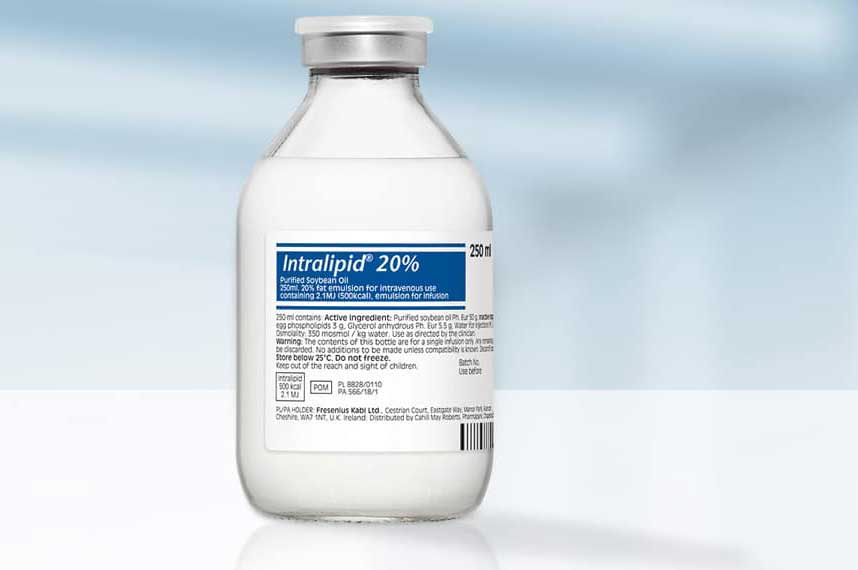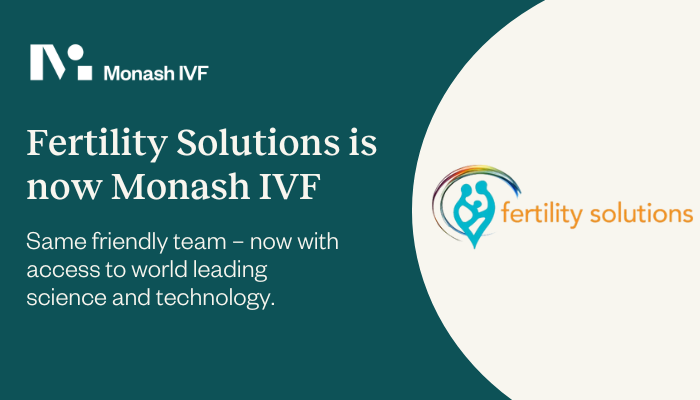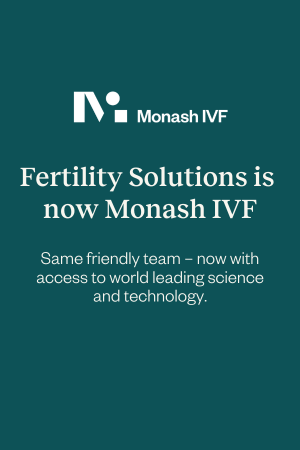Intralipid therapy has been used to reduce an immune rejection of an embryo because some studies indicate that it can suppress immune activity, while being relatively safe and inexpensive compared to these other treatments.
While some published reports suggest that Intralipid may be a useful adjuvant (additional), treatment in enhancing pregnancy rates in women experiencing IVF implantation failure and recurrent miscarriage, there are currently no high-quality randomised placebo-controlled trials supporting its use. However, the absence of these types of trials does not mean that Intralipid does not work, just that medical science is presently uncertain if Intralipid therapy will benefit patients.
A few trials have shown that you can suppress the levels of Natural Killer Cells (NKC) by giving it to women with elevated NK cells (tested because of either recurrent miscarriage or recurrent implantation failure), and how long that effect lasts for, however, they didn’t look at pregnancy rates because of treatment.
Interpretation of the available information is as follows:
Intralipid might be useful in women with elevated NK cells but we don’t know if this translates to improved pregnancy or live birth rates. It is important to test both peripheral (blood) NK cells and uterine NK cells as they can be different (ie just because the blood is normal doesn’t completely rule out the possibility that they are raised in the uterus). There are medications ie plaquenil (some use it for treatment of SLE) and prednisone that can be used to suppress NK cells. A suggested regime for someone with high NK cells is prednisone 10 mg until the trigger and 20 mgs until the outcome of the cycle is known along with clexane subcutaneous injections daily.
Additionally, Intralipids could be considered as a course of treatment.
What is Intralipid?
Intralipid is a fluid containing fat (lipid), that was originally designed to provide intravenous nutrition for patients unable to eat. However, over the last decade, Intralipid has been increasingly used as an adjunct “add-on” therapy for women with immune mediated implantation failure or miscarriage.
There are two reasons a doctor prescribes Intralipid therapy:
1. Immune Suppression:
Pregnancy can pose a unique, immunological challenge to a woman since the embryo/fetus is “foreign” to her immune system, being half-derived from the father. As the primary function of the immune system is to attack foreign invaders (bacteria, virus’, tumours), there is a potential for the immune system to attack the developing embryo/ fetus.
While natural protective mechanisms prevent this immune rejection in most pregnancies, unfortunately, for some women, a hostile immune response to the embryo/fetus has been suggested to produce implantation failure and miscarriage (1, 2). While recognised as a contentious area of medicine, women with an established history of auto-immune disease, or those women found to have some evidence of auto-immunity on testing (positive ANA/APLAs or thyroid antibody blood tests, raised Natural Killer cells on endometrial biopsy), are most likely to experience this type of immune mediated pregnancy loss.
Over the last three decades various forms of immunosuppressive therapy (corticosteroids, monoclonal antibody therapy such as Embrel, IVIG) have been employed to improve pregnancy outcomes, with mixed results (3). More recently, Intralipid therapy has been used to prevent immune rejection of embryos because some studies indicate that it can suppress immune activity (4-7), while being relatively safe and inexpensive compared to these other treatments.
If a patient has a personal history of auto-immune disease, or a blood or endometrial biopsy result suggesting an over-active immune system, a doctor may decide to use Intralipid with the expectation it may prevent immune rejection of the embryo.
While some published reports suggest that Intralipid may be a useful adjuvant treatment in enhancing pregnancy rates in women experiencing IVF implantation failure and recurrent miscarriage (2, 4-7), there are currently no high-quality randomised placebo-controlled trials supporting its use. However, the absence of these types of trials does not mean that Intralipid does not work, just that medical science is presently uncertain if Intralipid therapy will benefit patients.
A discussion between a patient and treating doctor can determine if Intralipid treatment is a reasonable approach, considering the patient’s specific medical issues and past treatment experiences.
2. Endometrial Growth Promotion:
Intralipid therapy may also be used to help promote endometrial growth in women known to have a thin endometrium on ultrasound assessment. In many of these cases inadequate endometrial development is possibly caused by poor blood flow to the uterine lining, linked to a deficiency in production of Vascular Endothelial Growth Factor (VEGF) in the endometrium (8,9), a vital growth factor for new blood vessel formation. Intralipid therapy has been found to significantly boost women’s levels of
VEGF in their blood, with these levels remaining elevated for up to 1 week after treatment (10, Repromed unpublished data).
While there are presently no high-quality studies confirming that Intralipid treatment increases endometrial thickness and implantation rates, it is scientifically plausible given the observations above. Again, a discussion between the patient and treating doctor can determine if Intralipid treatment is a reasonable approach, considering the patient’s specific medical issues and past treatments.
How is Intralipid Therapy Provided?
- Intralipid is a milky fluid that is added to a saline (salt) solution and administered intravenously over a 2-hour period at Fertility Solutions
- Patients will initially be assessed by the clinic nurse to check that they are well (no temperature, high blood pressure or acute illness) and have no allergies to the components within Intralipid (soy, eggs)
- Intravenous access will then be obtained by inserting a needle (cannula) into the patients’ arm.
- At the completion of the procedure patient observations are repeated
- When observations are within normal limits and stable, intravenous access will be removed and the patient free to leave
- The timing of Intralipid infusion in relation to the patient’s IVF treatment will be determined by the treating doctor. However, for presumed immune mediated implantation failure the typical practice is as follows:
- An Intralipid treatment 0 -2 days before embryo transfer
- A second treatment 7-9 days following embryo transfer
- If a +ve hCG is established a third treatment is administered within 7 days of the positive test
Previous research at other clinics (Repromed), has shown that Intralipid can modify women’s immune systems for at least 7 days between treatments (10)
- Intralipid use to Enhance Endometrium: When using Intralipid to improve blood flow to the endometrium it is administered as follows: 7-8 days before OPU or ovulation (no earlier as inadequate E2 level to stimulate lining)
- Some minor modifications to these timings may occur to accommodate a patient’s availability.
What are the Side Effects?
Fertility specialist have been prescribing Intralipid therapy for many years with no reported serious adverse reactions. However, it has been reported that Intralipid has been associated with the following:
- Rise in body temperature (occurs in less than 3%)
- Shivering and chills
- Nausea and vomiting occur (less than 1%).
- Other relatively rare side effects which have been reported to occur immediately or soon after Intralipid infusion include allergic reactions (skin rash and hives); breathing difficulties (rapid breathing, shortness of breath); effects on blood pressure; abdominal pain; tiredness; headaches; flushing; slight pressure over the eyes and dizziness.
As Intralipid is produced from soybeans and egg yolk, people who are allergic to soy or eggs should not receive Intralipid. Furthermore, given the significant cross reactivity between soy and peanut allergy, people who are allergic to peanuts should also not receive Intralipid therapy. You will be unable to receive an intralipid infusion is you have severe liver or renal disease.
There is no evidence that Intralipid is harmful to embryos or the early fetus. The published literature on the use of Intralipid during pregnancy has been reassuring that it is a safe therapy for both mother and baby, provide the safety precautions listed above are taken.
Preparing for your Procedure
Your specialist will provide the clinic with a medication order and the timing for the infusion will be set around your embryo transfer. You may need to have time off work so that the timing is correct for your treatment.
We recommend that you drink at least 2 litres of water the day of and prior to your therapy. You will be able to eat and drink as normal prior, during and following your therapy.
You may want to purchase some Emla patches (numbing cream) from a pharmacy and place one patch on the inner side of each arm at the level of the elbow at least 1 hour before your infusion is scheduled.
We suggest that you bring a warm jumper and reading material or iPad, phone etc. as the infusion can take up to 2 hours. You will be provided with light refreshments after your procedure, however you are welcome to bring something more substantial.
Frequently Asked Questions
Can I return to work after my intralipid infusion?
Yes, you can return to normal activities after your lipid infusion (including gym classes). There are no restrictions, however some patients have reported feeling lethargic in the afternoon after their lipid, you may want to consider this prior to making any commitment. Patients are advised to avoid heavy lifting for 24hrs, with the arm the IV was inserted.
Is there a cost?
Yes, there is a charge for the medication and an infusion fee.
Do I need to fast?
No, you can eat and drink normally prior, during and after your therapy.
I live in a remote location can I have my intralipid infusion closer to home?
In situations where you do live remotely and have access to a hospital or medical centre that are happy to provide you with an intralipid infusion Fertility Solutions is happy to provide a bottle of the Intralipid infusion along with information on how the infusion is to be administered. Please note if an additional bottle(s) of intralipid is provided there will be an additional medication cost.
I’m not a patient of Fertility Solutions, is there anywhere else I can get this infusion?
Yes there is, IV Health Sunshine Coast in Sippy Downs can administer these infusions for you. All you need is to attend a new patient consultation and if would be great if you can provide a script from your doctor and instructions on how to administer the medication but you can still attend without these.
References
Intralipid Product Information: https://www.freseniuskabi.com/au/documents/Intralipid_PI.pdf
Management of Extravasation Injuries: A Focused Evaluation of Noncytotoxic Medications.
Paul M. Reynolds, Robert MacLaren, Scott W. Mueller, Douglas N. Fish, Tyree H. Kiser
First published: 13 January 2014| https://accpjournals.onlinelibrary.wiley.com/doi/10.1002/phar.139
- Robertson SA, Moldenhauer LM. Immunological determinants of implantation success. Int J Dev Biol. 2014;58(2-4):205-17.
- Lédée N, et al., The Uterine Immune Profile May Help Women With Repeated Unexplained Embryo Implantation Failure After In Vitro Fertilization. Am J Reprod Immunol. 2016 Mar;75(3):388-401.
- Polanski LTet al.,. Interventions to improve reproductive outcomes in women with elevated natural killer cells undergoing assisted reproduction techniques: a systematic review of literature. Hum Reprod. 2014 Jan;29(1):65-75.
- Lédée N, et al.,. Intralipid® may represent a new hope for patients with reproductive failures and simultaneously an over-immune endometrial activation. J Reprod Immunol. 2018 Nov;130:18-22.
- Shreeve N, Sadek K. Intralipid therapy for recurrent implantation failure: new hope or false dawn? J Reprod Immunol. 2012 Jan;93(1):38-40.
- Granato D et al.,. Effects of parenteral lipid emulsions with different fatty acid composition on immune cell functions in vitro. JPEN J Parenter Enteral Nutr. 2000 Mar-Apr;24(2):113-8.
- Roussev RG et al.,. Duration of intralipid’s suppressive effect on NK cell’s functional activity. Am J Reprod Immunol. 2008 Sep;60(3):258-63.
- Takasaki A, et al.,. Endometrial growth and uterine blood flow: a pilot study for improving endometrial thickness in the patients with a thin endometrium. Fertil Steril. 2010 Apr;93(6):1851-8.
- Alfer J, et al.,. Insufficient Angiogenesis: Cause of Abnormally Thin Endometrium in Subfertile Patients? Geburtshilfe Frauenheilkd. 2017 Jul;77(7):756-764.
- Roccisano C and Tremellen K. The Lipid Immunotherapy Pregnancy Immune Dysfunction (LIPID) study. Unpublished findings.



